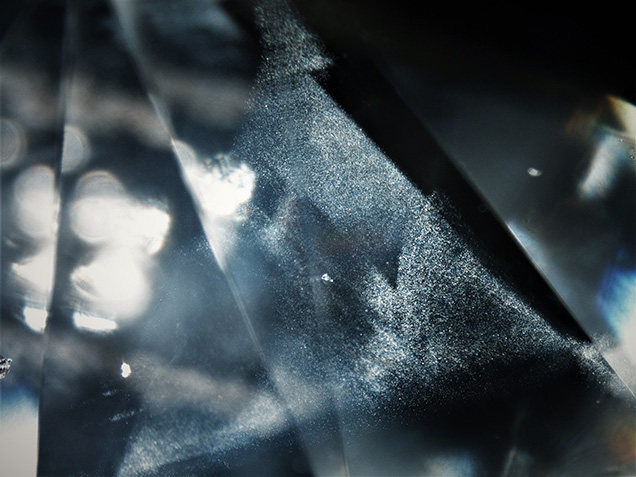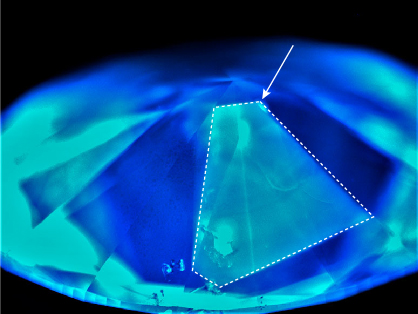A “Galaxy” within a Diamond

The 2.01 ct, D-color, I1-clarity type IaB diamond in figure 1 reveals an intriguing cloud of particles grouped in a triangular shape. These tiny crystal and particle cloud inclusions resemble a galaxy, as if seeing the Milky Way at night.

The DiamondView image in figure 2 reveals blue fluorescence with a hazy triangular glowing area that matches perfectly with the position of the particle cloud in figure 1. Furthermore, this type IaB natural diamond displays a fibrous pattern in the DiamondView instead of the tree-ring pattern that is typical in type Ia diamond. This fibrous pattern is related to a weak B-aggregated (B-center; 4N+V) signal in Fourier-transform infrared spectroscopy.
Finding and analyzing inclusions in diamonds is fascinating, as you never know where the next diamond will lead you—perhaps you will even discover your own galaxy.
.jpg)


